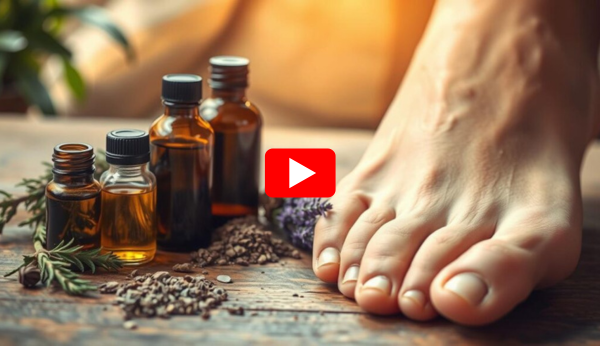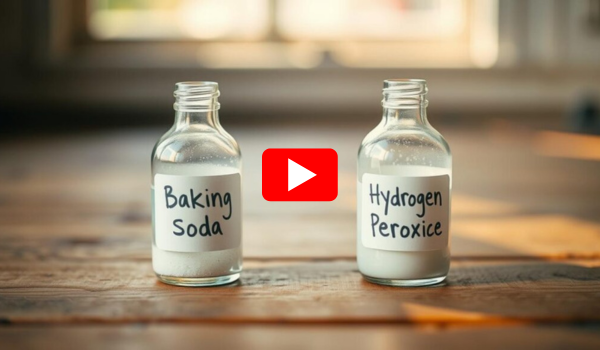At Home Light Therapy For Toenail Fungus | Fast Relief Tips
Contents
- 1 Understanding Toenail Fungus: What Are You Up Against?
- 2 Traditional Treatments for Toenail Fungus
- 3 What is Light Therapy for Toenail Fungus?
- 4 How Does At-Home Light Therapy Work?
- 5 Benefits of At-Home Light Therapy for Toenail Fungus
- 6 Choosing an At-Home Light Therapy Device
- 7 How to Use At-Home Light Therapy for Toenail Fungus
- 8 Safety and Precautions
- 9 Realistic Expectations: How Long Before You See Results?
- 10 Final Thoughts
- 11 References
Toenail fungus may not be a life-threatening condition, but for millions of people, it’s an embarrassing, persistent, and sometimes painful issue that affects confidence and daily comfort.
If you’ve noticed your toenails turning yellow, thickening, or becoming brittle, you might be dealing with onychomycosis — the medical term for a fungal nail infection.
While topical treatments and oral antifungal medications have long been the standard, these methods can be slow, sometimes ineffective, and in the case of oral drugs, potentially harsh on the liver.
In recent years, light therapy has emerged as a modern, non-invasive, and increasingly popular at-home treatment for toenail fungus. But how does it work, and is it actually effective?
At-home light therapy offers a safe, non-invasive way to treat toenail fungus, promoting clearer nails with consistent, chemical-free use over time.
This article serves as your complete guide to at-home light therapy for toenail fungus, covering how it works, its benefits, how to use it, safety considerations, and what results you can realistically expect.
Understanding Toenail Fungus: What Are You Up Against?
Toenail fungus occurs when fungal organisms — primarily dermatophytes, but also yeasts and molds — invade the nail bed and nail plate.
These fungi thrive in warm, damp environments, making sweaty socks, locker rooms, communal showers, and poorly ventilated shoes ideal breeding grounds.
Common symptoms include:
- Yellow, brown, or white discoloration of the nail
- Thickened or distorted nail shape
- Brittle, crumbly, or ragged nail texture
- Foul odor from the infected nail
- Pain or discomfort while walking or wearing shoes
- Nail detachment from the nail bed in severe cases
The condition is highly contagious and can spread from nail to nail or to other people via shared surfaces or footwear.
Risk factors include:
- Aging (as circulation slows and nails thicken)
- Excessive sweating
- Walking barefoot in public areas
- Wearing tight or non-breathable shoes
- Compromised immune systems
- History of athlete’s foot
Left untreated, toenail fungus can worsen, spread, and even lead to secondary infections.
Traditional Treatments for Toenail Fungus
Traditionally, doctors have recommended one of three treatments for fungal nail infections:
- Oral antifungal medications such as terbinafine (Lamisil) or itraconazole (Sporanox)
- Topical antifungal creams, ointments, or nail lacquers
- Surgical removal of the infected nail in severe or resistant cases
Oral medications can be effective but carry a risk of side effects such as gastrointestinal discomfort, skin rashes, and liver toxicity. These drugs also typically require blood tests to monitor liver function.
Topical treatments are safer but often struggle to penetrate the hard nail plate and reach the nail bed, where the fungus thrives. As a result, they may take months or years to work, if at all.
This leads many sufferers to seek alternative, non-invasive therapies, and light therapy for toenail fungus has quickly gained attention as one of the most promising options.
What is Light Therapy for Toenail Fungus?
Light therapy, also known as phototherapy or laser therapy, involves using specific wavelengths of light to target and neutralize fungal infections beneath the toenail.
By penetrating the nail plate and nail bed, these light-based treatments can disrupt fungal growth and, in some cases, destroy the fungal cells altogether.
There are two main types of light therapy used for toenail fungus:
-
Laser Light Therapy
-
Uses concentrated beams of light at specific wavelengths (commonly 870 nm, 930 nm, or 1064 nm)
-
Targets fungal cells without damaging surrounding tissues
-
Often used in clinical or podiatrist settings, though FDA-cleared home-use devices are now available
-
-
LED Light Therapy
-
Uses light-emitting diodes (LEDs) to deliver lower-intensity, but still effective, light energy
-
Typically combines blue light (405-470 nm), which has antifungal and antibacterial properties, with red light (630-670 nm) to enhance blood flow and support healing
-
Both therapies offer a safe, painless, and non-invasive way to treat fungal nail infections at home.
How Does At-Home Light Therapy Work?
The process is surprisingly straightforward. Light therapy devices — ranging from laser pens to light pods or toe caps — emit specific wavelengths of light that penetrate through the nail plate and reach the fungus underneath.
Key mechanisms of action:
- Blue light: Disrupts the fungal cell membranes and inhibits their reproduction. It can also kill certain bacteria and prevent secondary infections.
- Red light: Enhances local blood circulation, delivering more oxygen and nutrients to the affected area while stimulating the immune response. It promotes healthier nail growth and assists in tissue repair.
- Laser light (in high-powered devices): Generates heat or reactive oxygen species (ROS) that can directly destroy fungal cells without harming the surrounding tissue.
The combination of these effects helps to:
- Disrupt the fungal infection at its root
- Support the body’s natural healing process
- Encourage new, healthy nail growth to replace the infected nail
Benefits of At-Home Light Therapy for Toenail Fungus
Light therapy offers several advantages over conventional treatments, especially for individuals seeking a safe, effective, and convenient option without the side effects of medication.
Key benefits include:
- Non-invasive: No incisions, no injections, and no pills involved
- Pain-free: Most users report no discomfort during treatment
- Drug-free: Safe for people who cannot take oral antifungals due to liver issues or medication interactions
- Minimal side effects: No serious adverse effects reported when used as directed
- FDA-cleared home devices available: Making professional-grade treatment accessible from the comfort of your home
- Improves overall nail health: By boosting circulation and encouraging new nail growth
- Can be combined with other treatments: Such as topical antifungals or natural remedies, for enhanced results
Choosing an At-Home Light Therapy Device
When selecting a light therapy device for toenail fungus, consider these factors:
1. Wavelength Range: Ensure the device uses wavelengths in the 405-470 nm (blue light), 630-670 nm (red light), or 870-1064 nm (laser) ranges, as these have shown effectiveness against fungal organisms.
2. FDA Clearance: Look for devices that have received FDA 510(k) clearance for safety and efficacy in treating onychomycosis.
3. Treatment Time and Frequency: Consider how long each session takes and how often you’ll need to use it. Most at-home devices recommend daily use, with sessions lasting between 7-30 minutes per foot.
4. Coverage Area: Devices vary from single-laser pens for spot treatment to full toe covers or pods that treat multiple nails simultaneously.
5. Portability and Convenience: Choose a device that fits your lifestyle — whether you prefer a compact, travel-friendly pen or a hands-free light pod.
6. Warranty and Customer Support: Invest in devices from reputable brands offering warranties and reliable customer service.
How to Use At-Home Light Therapy for Toenail Fungus
Most at-home light therapy devices are simple to use. Here’s a general step-by-step guide:
- Clean and dry your feet thoroughly. Remove any nail polish, lotion, or debris from the affected nail.
- Position the device over the infected toenail. Ensure proper alignment so the light covers the entire nail area.
- Turn on the device. Follow the manufacturer’s instructions for session duration and frequency. Most devices recommend daily sessions for 6-12 weeks or until clear, healthy nail growth appears.
- Be consistent. Toenail fungus treatment requires patience and regular application. Missing sessions can delay results.
- Monitor progress. New, healthy nail growth typically starts at the cuticle and moves outward. Complete regrowth of a toenail can take 9-12 months.
Safety and Precautions
While at-home light therapy is considered safe and well-tolerated, keep the following in mind:
- Use only FDA-cleared devices for treating fungal infections.
- Avoid looking directly into a laser or LED light to prevent eye damage.
- Follow the recommended treatment time — overuse won’t speed up results and could cause mild irritation.
- Consult your doctor if you have diabetes, peripheral neuropathy, or poor circulation before starting treatment.
- Combine with good foot hygiene practices: Keep feet clean and dry, change socks regularly, and disinfect footwear.
Realistic Expectations: How Long Before You See Results?
Patience is key when treating toenail fungus, whether with light therapy or any other method. Light therapy works by halting fungal growth and encouraging new, clear nail formation, but it doesn’t restore already damaged nails instantly.
Timeline to expect:
- 6-8 weeks: Reduction in discoloration and thickening as fungal activity diminishes
- 3-6 months: New, clear nail growth becomes visible from the cuticle
- 6-12 months: Full regrowth of the toenail, depending on the severity of the infection and individual nail growth rates
Consistency is essential for optimal results.
Final Thoughts
If you’re battling unsightly toenail fungus and are wary of the side effects or limitations of oral and topical antifungals, at-home light therapy offers a promising, effective, and convenient alternative.
With growing clinical evidence supporting its safety and efficacy, and a range of FDA-cleared devices now available, it’s easier than ever to restore healthy, clear nails from the comfort of your home.
As with any treatment, consistency, patience, and good foot hygiene habits will maximize your chances of success.
.
References
- https://www.ncbi.nlm.nih.gov/pmc/articles/PMC4997435/
- https://www.healthline.com/health/laser-treatment-for-toenail-fungus
- https://www.aad.org/public/diseases/a-z/toenail-fungus-overview
- https://www.ncbi.nlm.nih.gov/pmc/articles/PMC4896311/
- https://www.dermatologytimes.com/view/laser-therapy-safe-effective-treatment-onychomycosis
- https://www.ncbi.nlm.nih.gov/pmc/articles/PMC6139916/



